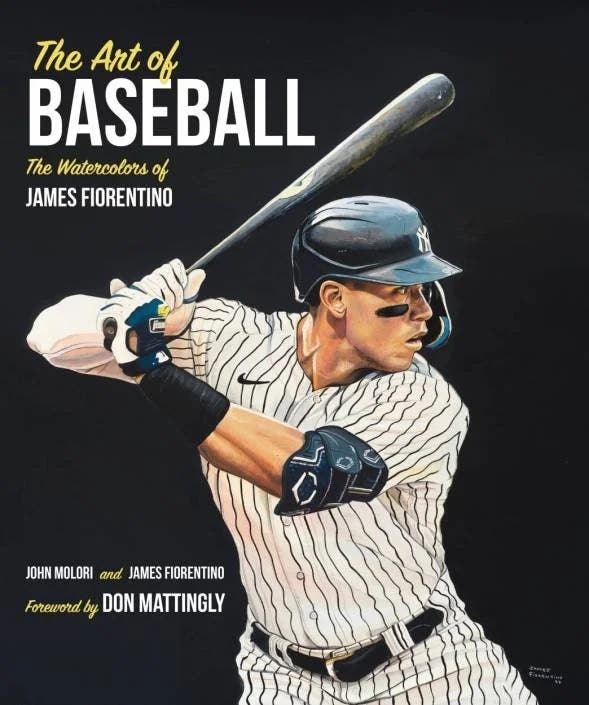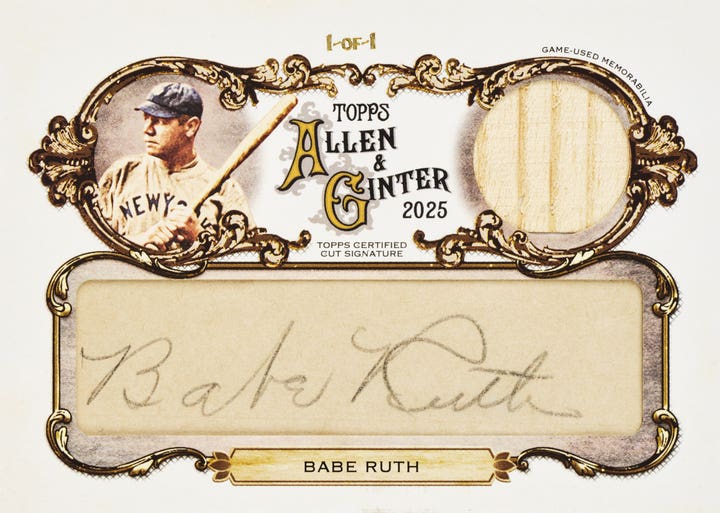News
Fake-memorabilia scam could go Hollywood
Here’s the scene: It’s Sunday afternoon in the banquet room of a hotel in West Hollywood. I’m sitting across the table from a Hollywood producer pitching her on why my book, Operation Bullpen: The Inside Story of the Biggest Forgery Scam in American History, will make a great movie.
“It’s all true,” I tell her. “I’m not making a word of this up. It all happened.”
“Great,” she tells me. “I love true stories.”
“It’s about a group of people who basically start with nothing and create a $100-million forgery ring, the biggest in America.”
Suddenly the producer looks puzzled, like she ate something bad. “How? What are they forging?”
“Fake autographs. You know, Babe Ruth, Mickey Mantle, Michael Jordan, Muhammad Ali, superstars like that. And they’re forging these autographs on baseballs, jerseys, photos, posters – you name it. They produce hundreds of thousands of fakes and sell them on the home shopping channels, eBay, stores, all over the place. And they make millions in cash.”
“Okay,” she says, finally getting it. “What’s the story?”
So then I’m off and running, trying to squeeze a 300-page book that spans 10 years and includes dozens of characters into a five-minute synopsis. Five minutes is all you get. After that a bell rings and you’re done. The pitch is over.
Although the time is tight, I can tell that the head of Dana Lustig Productions and her assistant are really into what I’m saying. They’re leaning forward across the table and wearing serious expressions, and as I head into my dramatic climax – how the ring gets busted up, with more than 400 FBI agents seizing $10 million in counterfeit merchandise and $500,000 in cash in one day alone – I know I’ve got them hooked.
“Sorry,” she says when I’m done. “It isn’t the kind of thing we do. Great story, though. Let us know if there’s any development on it in the future.”
Oh well. Win some, lose some. The bell rings, and I’m off to take my place in a line outside the banquet room where I wait until my next meeting with a different producer. This “pitch conference,” as it’s called, is arranged by Fade In magazine, the purpose being to bring together writers like myself with movie and TV producers who are looking for potential new material. Representatives from about 75 production companies are here, including some pretty big names: HBO, New Line Cinema, Paramount Pictures, the Weinstein Co., the production companies of Penny Marshall, Jamie Foxx, Tim Allen and others.
The movie people sit at tables in the banquet room, listening to the ideas of the writers who sit across from them. When the bell rings, all the writers stand up and leave, to be replaced by the next wave of writers. You can pitch to as many different producers as you can get in to talk to. By my count, about 150 writers are pitching for all their worth, every one of us believing we’ve got an idea that could become the next “Godfather” or “Pulp Fiction.”
Of course, that’s silly. The guy standing next to me has a concept for a serial killer movie. But one producer turned him down because his company already has a serial killer movie in development and doesn’t need any more serial killer stories. That’s show biz for you.
How I came to be here is a story in itself. Operation Bullpen: The Inside Story of the Biggest Forgery Scam in American History came out late last fall. It’s gotten a great response, especially from collectors. SCD ran two prepublication excerpts from the book, and I’ve appeared on Court TV, ESPN and radio shows such as Traders Speak and Harry L. Rinker’s program. In December I wrote a follow-up piece in SCD basically thanking the collecting community for its support of the book, which continues to this day. The book is still selling at www.operationbullpen.com, Amazon and many other places, and I’m still fielding calls and e-mails from collectors, many of whom have said to me: “You know, this would make a terrific movie.”
The media have said the same thing. When I appeared on ESPN, I asked a guy in the studio how he thought the interview went after we were off the air. “As I was listening to you,” he said, “I was thinking to myself, ‘This sounds like a movie.’ ”
A few of the reviews have mentioned the movies, too, “This is either the sports book of the year or the crime book of the year.” said the Oakland Tribune. “Either way, it’s a movie crying to be made.” Another reviewer said the book “reads like a John Grisham thriller with the good guys and bad guys playing a cat and mouse game in the world of big money autographs.” (I know, I know. Grisham writes novels, but most of his books are turned into movies.)
Interestingly, when I was interviewing “the good guys and the bad guys,” if you will – the men and women involved in the conspiracy as well as the FBI and IRS agents that brought them down – people on both sides told me that while they were participating in the case, it seemed sometimes like they were in a movie.
After hearing all these comments, that’s why I decided to come to this Sunset Boulevard hotel and sit across the table from two young women who, I swear, look no older than my college-age daughter. They represent Trillion Entertainment, and tell me they’re looking for “female-driven material.”
“Well,” I say, “the main forger is a guy named Greg Marino, and he and his buddies go wild forging all this stuff. The thing gets so big that his mother, Gloria, gets involved. She becomes the financial kingpin and starts building her dream house with all the illegal cash they’re making. And the wives of the guys in the gang play a big role in it, too.”
The girls giggle and shake their head in near-perfect unison, sending me off to stand in line till my turn comes around again. The conference in some ways resembles the old “Gong Show.” If the movie people don’t like what you’re saying, you don’t even get five minutes before you’re gonged off stage. Next!
Despite the misses, I’m getting some hits, too. Some producers seem genuinely interested, and one thing that interests them is the ring of forgers and counterfeit distributors who committed the crimes. “They were just everyday people, for the most part,” I say. “They weren’t professional crooks. Many of them were collectors. They collected baseball cards when they were kids – that sort of thing.”
“I can’t believe how they got away with it and why people kept falling for it,” one producer says to me.
“A high-class forgery isn’t always easy to detect,” I tell her. “Even the experts can have trouble with it.”
Another thing that draws interest is how many millions of dollars the forgers made and how big the collecting hobby is in general. I’ve found this to be true in my book talks, too. Many of the people who’ve read the book are not collectors. Even so, nearly everyone I’ve spoken to has some cherished signed keepsake tucked away in a drawer somewhere or hanging on a wall. Or they have a brother or father or friend who collects signed things.
It’s a hobby that has touched millions of Americans, and yet many in the general public are not aware of it. One producer tells me that the collecting world is a fascinating milieu and that he’s not sure if he’s ever seen it depicted in a movie before. (That’s a good question for SCD readers: Have there been any movies about collecting? And have any characters in movies been collectors?)
Hollywood people pride themselves on being cynical. They’ve heard it all, they say. But if they’ve heard it all, why are so many of them here today? Because of the possibility that someone will walk through the door, sit down across them and deliver a gold nugget of an idea.
A smart guy from Leverage Productions is convinced I am not that person. “How does the story end?” he says, interrupting my pitch practically before it starts. “I assume the FBI breaks up the ring and all that.”
“No,” I respond, “the FBI’s undercover investigation doesn’t go down exactly as planned. Things happen in an unexpected way. That’s why it’s such a fascinating story.”
After Leverage, I go to the Content House table. From there I move on to Riverview and after that, Robert Kosberg. Then comes Daniel Paulson, Red Wagon, Stuber Parent, Trigger Street and God Knows Who Else. God Knows Who Else is not the name of a Hollywood production company, although it should be. Anyhow, all these people and names are beginning to blur as I finally get to sit down with a representative of a company I’ve actually heard of: HBO.
It’s impossible to know what will come of all this pitching and catching. I’ve gotten enough positive feedback to feel encouraged. Although, in talking to the serial killer idea guy and other writers, I get the impression it’s easy for producers to give positive feedback. Having your book or idea actually made into a movie is another thing altogether. But I’m in there pitching, and I’m happy about that. You can’t succeed if you don’t try, right?
And that’s one reason I feel good about sitting down with HBO. It’s a well-known company that makes fine movies and TV shows and a movie about the biggest forgery ring in American history might be right up its alley. Sort of a collecting version of “The Sopranos?” Yes, or no?
“Interesting story,” the woman says as the bell rings. “But I’m in comedy. I’ll give your book to someone in drama.” Ugh. Clunk. Next!
(Editor’s Note: After all his pitching, Kevin Nelson achieved success. Operation Bullpen: The Inside Story of the Biggest Forgery Ring in American History has been optioned by a Hollywood production company, which has acquired the rights to develop it into a motion picture. Turning a book into a movie can take years, of course (if it happens at all), and here at SCD we’ll keep you posted on the progress of the project.)








